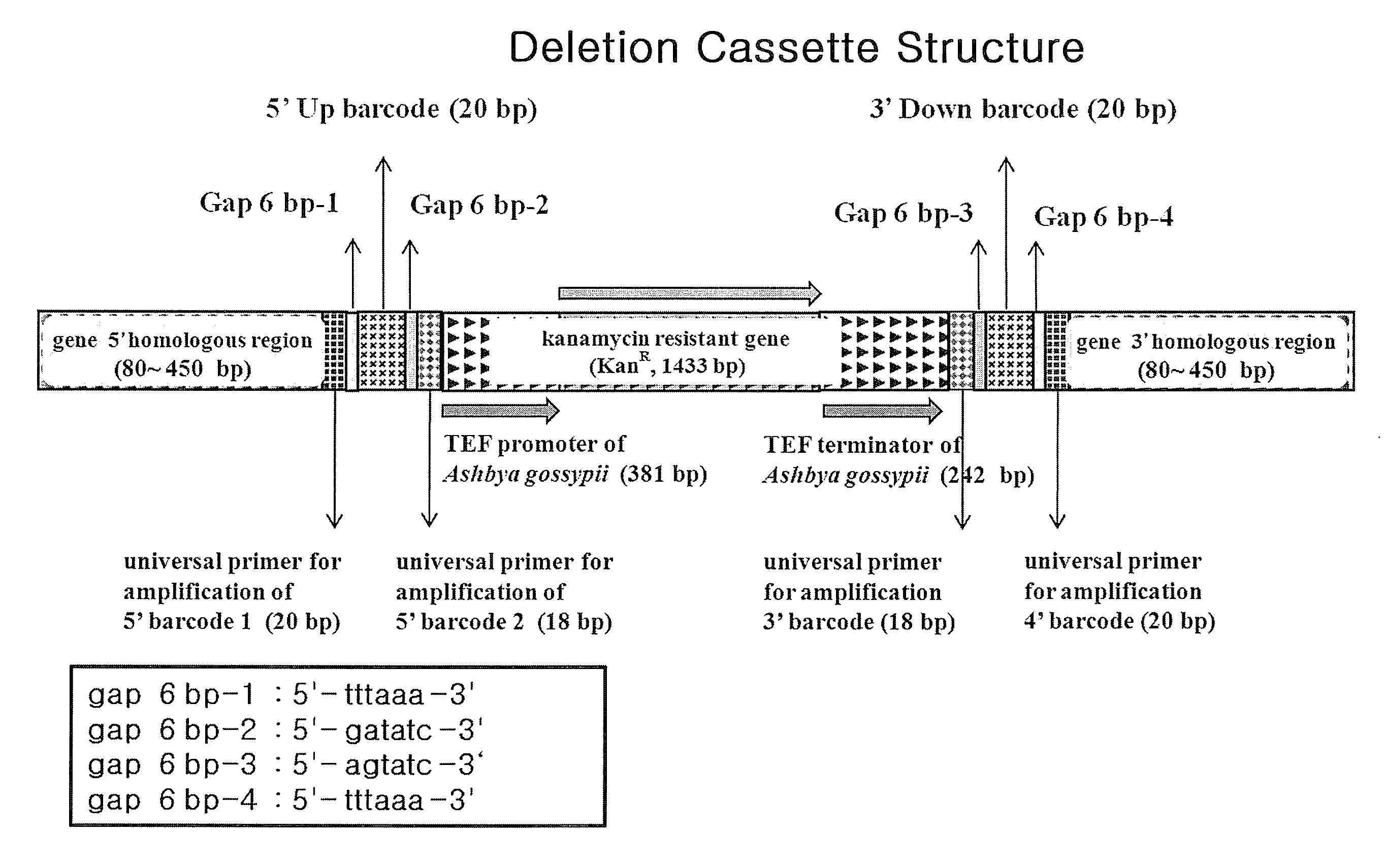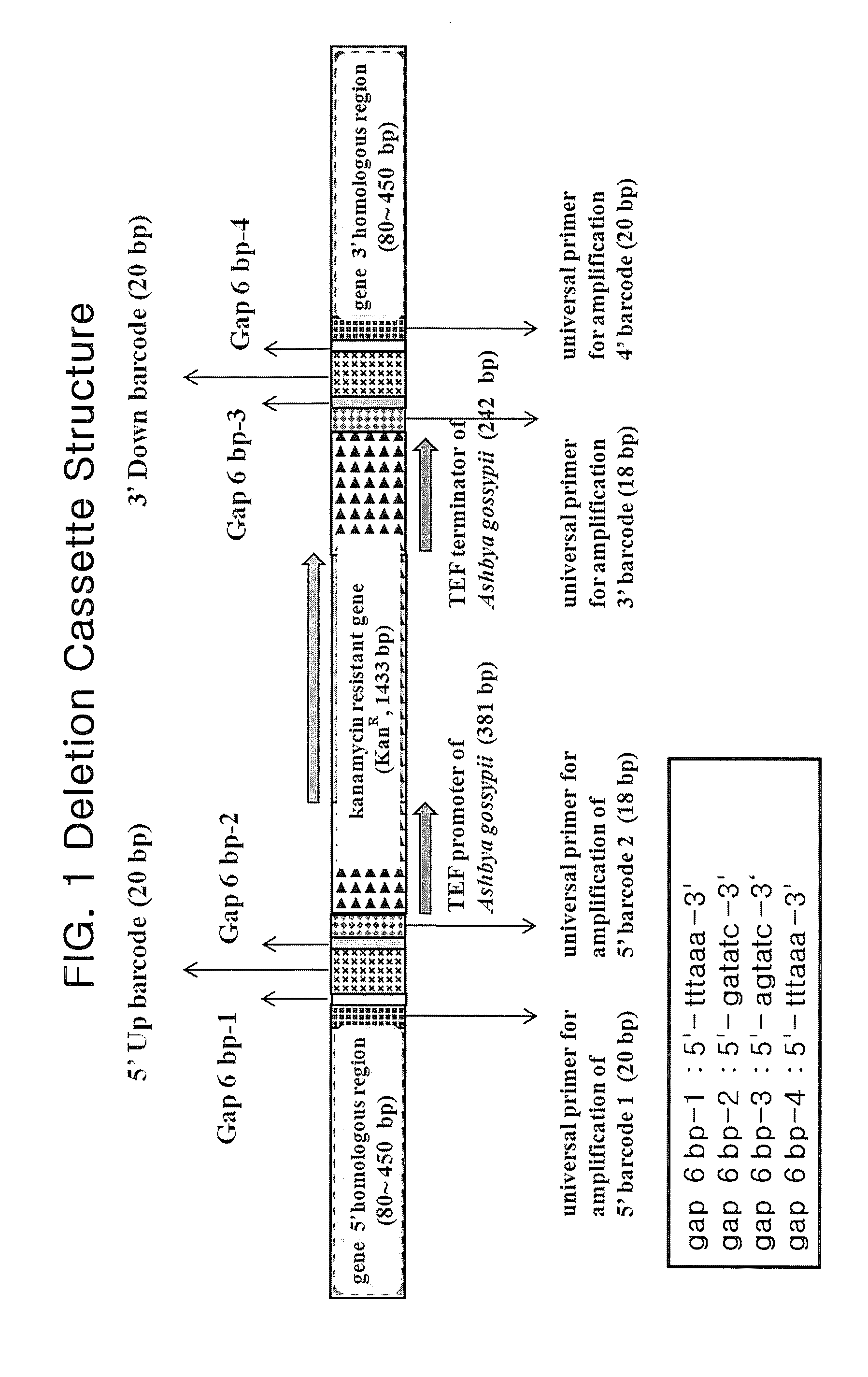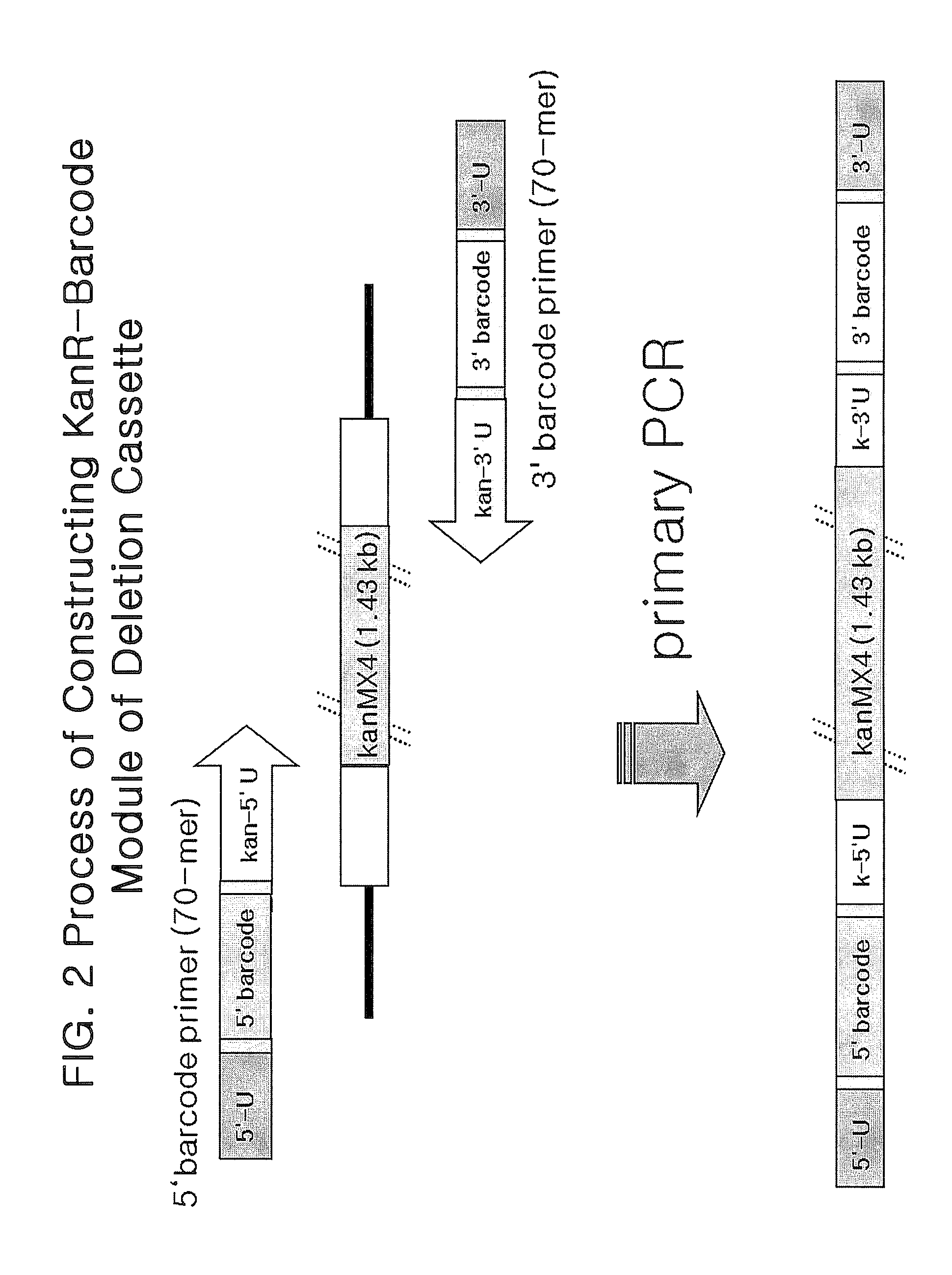Genome-Wide Construction of Schizosaccharomyces Pombe Heterozygous Deletion Mutants Containing Gene-Specific Barcodes by the Methods of 4-Round Serial or Block PCR, or Total Gene Synthesis Thereof
a technology of schizosaccharomyces pombe and deletion mutants, which is applied in the field of systemically preparing gene-targeted heterozygous deletion mutant strains of schizosaccharomyces pombe, can solve problems such as abnormal phenotype, and achieve the effect of increasing the success rate of constructing and effectively developing novel drugs
- Summary
- Abstract
- Description
- Claims
- Application Information
AI Technical Summary
Benefits of technology
Problems solved by technology
Method used
Image
Examples
example 1
Construction of Deletion Cassette by Four-Round Serial PCR or Block PCR
[0081]Deletion cassettes can be constructed in two different PCR techniques: four-round serial PCR and block PCR. These two PCR-based methods are common in preparing a Kanr-barcode module in advance. The base sequence of KanMX4 is well known in the art and is not described specifically. Primary PCR was performed with a pair of 70-mer 5′- and 3′-barcode primers, each containing a gene-specific barcode while KanMX4 served as a template to prepare a Kanr-barcode module (FIG. 2). After electrophoresis on agarose gel stained with ethidium bromide (EtBR), the Kanr-barcode module thus prepared was extracted from the gel by excising under a UV lamp.
[0082]The four-round serial PCR for constructing deletion cassettes is similar to the conventional one used for constructing gene-targeted budding yeast or fission yeast mutants, but different thereto in that 80-bp homologous recombination region is added to either ends of the...
example 2
Construction of Deletion Cassette by Gene Synthesis
[0084]Even the PCR technology described above failed to prepare gene-targeted mutants for as many as 4% of the total genes. The reason is because the high contents of both adenine (A) and thymine (T) in the promoter and the terminator of the gene do not allow for primer sites of conventional PCR. In consideration of this problem, the gene synthesis method was employed. The present invention is the first to use gene synthesis in constructing deletion cassettes and preparing deletion fission yeast mutants.
[0085]A deletion cassette was designed to consist of three fragments: 1) 5′ chromosome-homologous region bearing 5′ common liker sequence and 5′ barcode, 2) kanamycin resistance gene (Kanr), and 3) 3′ barcode and 3′ chromosome-homologous region bearing 3′ common liker sequence. To connect these three fragments into a one line, overlapping link oligo-sequences are arranged between the fragments to be connected with each other (FIG. 5)...
example 3
Transformation of Deletion Cassette and Identification of Gene-Targeted Mutants
[0088]Using the lithium acetate method, the deletion cassette prepared through Examples 1 and 2 was transformed into diploid fission yeast SP286 strains (ade6-M210 / ade6-M216, ura4-D18 / ura4-D18, leu1-32 / leu1-32) (Moreno et al., Methods Enzymol. 194:795-823). The transformed strains were spread over YES agar plates and cultured at 30° C. for 3˜4 days to form colonies. Colony PCR was performed to examine whether desired genes were targeted. A small amount of cells were picked from edges of grown colonies on agar plates and suspended in deionized water. A portion of the suspension was subjected to PCR with a pair of primers. As shown in FIG. 6, colony PCR was performed with a pair of CP5 and CPN1 or CPN10 for the 5′ side of the deletion cassette inserted into the chromosome and with a pair of CP3 and CPC1 or CPC3 for the 3′ side of the deletion cassette. CP5 and CP3 were located 100˜200 bp upstream and downst...
PUM
| Property | Measurement | Unit |
|---|---|---|
| Tm | aaaaa | aaaaa |
| Tm | aaaaa | aaaaa |
| concentration | aaaaa | aaaaa |
Abstract
Description
Claims
Application Information
 Login to View More
Login to View More - R&D
- Intellectual Property
- Life Sciences
- Materials
- Tech Scout
- Unparalleled Data Quality
- Higher Quality Content
- 60% Fewer Hallucinations
Browse by: Latest US Patents, China's latest patents, Technical Efficacy Thesaurus, Application Domain, Technology Topic, Popular Technical Reports.
© 2025 PatSnap. All rights reserved.Legal|Privacy policy|Modern Slavery Act Transparency Statement|Sitemap|About US| Contact US: help@patsnap.com



